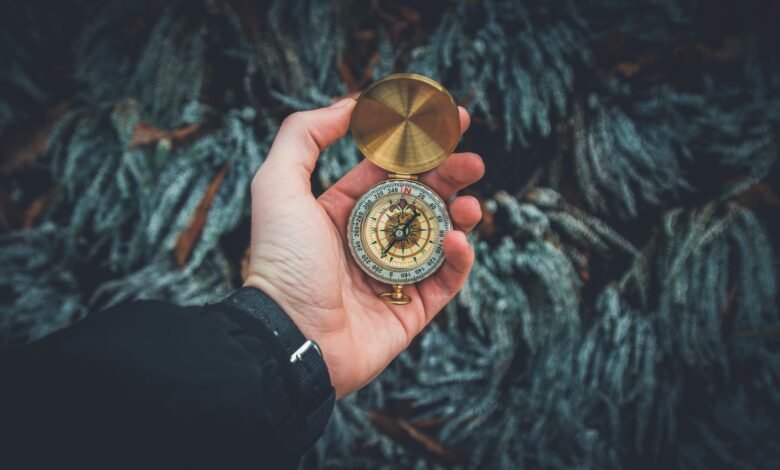The Ultimate Guide to Understanding Oxygen and Its Importance

From the churning waters of the ancient oceans to the whispering leaves of your backyard’s trees, oxygen is an elemental player in the theater of life. Yet, it’s often overlooked and taken for granted, navigating the invisible theatrics of our world. However, when our attention does turn to the importance of oxygen, it’s with an acute sense of urgency or reverent appreciation. Oxygen is so much more than just the breath you take or the bubbles in your favorite beverage — it’s a fundamental element that underpins the very essence of life on Earth.
In this expansive guide, we’re dissecting oxygen from every conceivable angle. We’ll peel back the layers of this vital gas to reveal its origins, myriad uses, and indomitable importance in sustaining life as we know it. Here, we breathe in the science, ecology, and cultural significance of oxygen, and how understanding it can lead to a deeper respect for our shared environment.
Oxygen Basics
Before exploring its significance, it’s crucial to establish the basic facts about oxygen.
Defining Oxygen
Oxygen is the third most abundant element in the universe and is a chemical element. Its atomic number is 8, meaning each of its atoms contains eight protons. In its most common form, known as diatomic oxygen (O2), it’s a colorless, tasteless, and odorless gas that forms approximately 21% of Earth’s atmosphere.
Properties of Oxygen
Oxygen is a member of the chalcogen group on the periodic table. At standard temperature and pressure, elemental oxygen exists as a paramagnetic diatomic molecule with a bond length of 121 picometers and bond energy of about 498 kJ/mol. Its boiling and melting points are significantly lower than many other gases, making it essential for a host of chemical reactions.
Oxygen’s Role in Sustaining Life
The story of oxygen’s entry into the narrative of life is as vast as it is fascinating. The Great Oxygenation Event, occurring around 2.4 billion years ago, introduced significant amounts of oxygen into Earth’s atmosphere, paving the way for the evolution of aerobic organisms, including the complex organisms we see today.
Oxygen Sources
Life-sustaining oxygen doesn’t just materialize out of thin air — well, technically, it does, but it’s a product of other processes.
Natural Sources of Oxygen
Premier among the natural producers of oxygen are plant life and marine plankton. Through the process of photosynthesis, where light energy is converted to chemical energy, these organisms generate oxygen as a byproduct. Notably, the Amazon rainforest is akin to the lungs of our planet, contributing a significant portion of our Earth’s oxygen.
Additionally, our blue planet’s oceans are significant contributors of atmospheric oxygen. Marine phytoplankton, a microscopic ode to the grandeur of life, rivals the vegetation on land in its capacity to produce oxygen.
Industrial Production and Distribution of Oxygen
While nature remains the primary oxygen generator, industrial processes have emerged that mimic and augment these natural systems. The separation of oxygen from air is big business, with techniques ranging from cryogenic distillation to pressure swing adsorption and membrane separation allowing for the large-scale extraction and distribution of oxygen.
Importance of Oxygen
The significance of oxygen touches nearly every aspect of our being, from the metabolic to the environmental.
Oxygen in Respiration and Energy Production
At the individual level, oxygen is critical for respiration, the process through which cells convert oxygen and nutrients into energy. The familiar cheerleading trio of respiration — glycolysis, the citric acid cycle, and oxidative phosphorylation — culminates in the production of adenosine triphosphate (ATP), the molecular unit of currency for energy transfer within cells.
Oxygen’s Role in Metabolism and Cellular Function
Beyond energy production, oxygen functions within the metabolic pathways that synthesize essential molecules, including fatty acids and steroids. Furthermore, oxygen is the final electron acceptor in the electron transport chain, without which cells would be deprived of their primary means of generating ATP.
Oxygen Therapy
When it comes to medicine, oxygen isn’t just a necessary life function — it’s a living, breathing therapy modality.
Medical Applications of Supplemental Oxygen
Supplemental oxygen, often administered by nasal cannula or mask, is an integral part of treating a variety of medical conditions. From acute respiratory distress syndrome and chronic obstructive pulmonary disease to neonatal care, oxygen therapy provides a supplemental boost to the respiratory system, ensuring that organs receive the oxygen they require for optimal function.
Oxygen Therapy for Respiratory Conditions
Conditions that interfere with the body’s ability to maintain proper oxygen levels might necessitate the use of oxygen therapy. Chronic conditions such as emphysema and pulmonary fibrosis can be managed with home oxygen, allowing patients to maintain an active lifestyle and alleviating symptoms associated with low blood oxygen levels, such as shortness of breath and fatigue.
Oxygen in the Environment
Oxygen is the unsung hero of our ecological systems, maintaining a delicate balance that supports a rich diversity of life.
Oxygen’s Role in Ecosystems and Biodiversity
In ecosystems, oxygen is the primary atmospheric agent and a regulator of the biogeochemical cycles that sustain life. It plays a critical role in the carbon, hydrogen, nitrogen, and sulfur cycles, influencing the growth and decomposition of organic matter, weathering, and the chemistry of Earth’s surface. Without oxygen, life as we know it could not persist.
Human Impact on Oxygen Levels in the Atmosphere
The quest for development and the impact of industrialization have not been without their environmental costs, and the concentration of oxygen in the atmosphere has been subject to human influence. Deforestation and the burning of fossil fuels are two significant contributors to the depletion of oxygen sources, tipping the delicate balance that sustains life.
Conclusion
The study and understanding of oxygen is not just the purview of scientists and scholars but a pursuit that enriches the life and understanding of every individual. From the microcosmic dances within our cells to the macrocosms of our global atmosphere, oxygen is the common thread that connects every living thing.
We stand at a critical juncture in our relationship with this essential element. The challenge before us is not just to comprehend oxygen’s importance but to take action to protect and preserve it. With the knowledge and appreciation of oxygen’s role in life, we each hold a piece of the puzzle that can inspire collective action for a sustainable future.
Inhale deeply and reflect upon the oxygen in your lungs — a gift given freely by the environment — and consider how you might give back in kind, nurturing the very sources that have sustained us through the ages.



